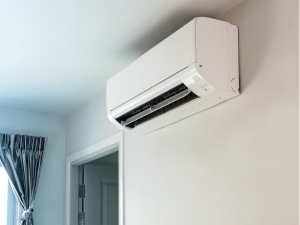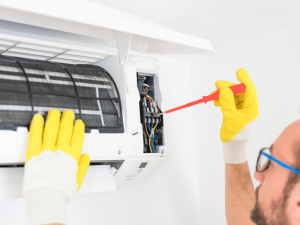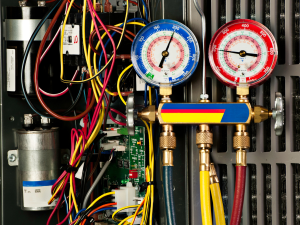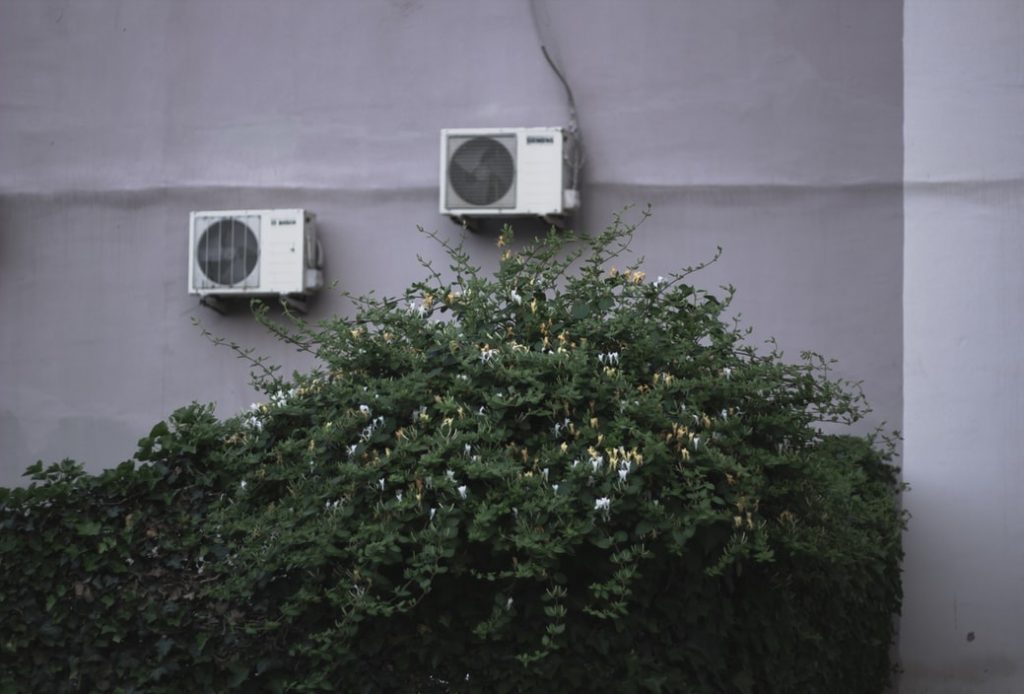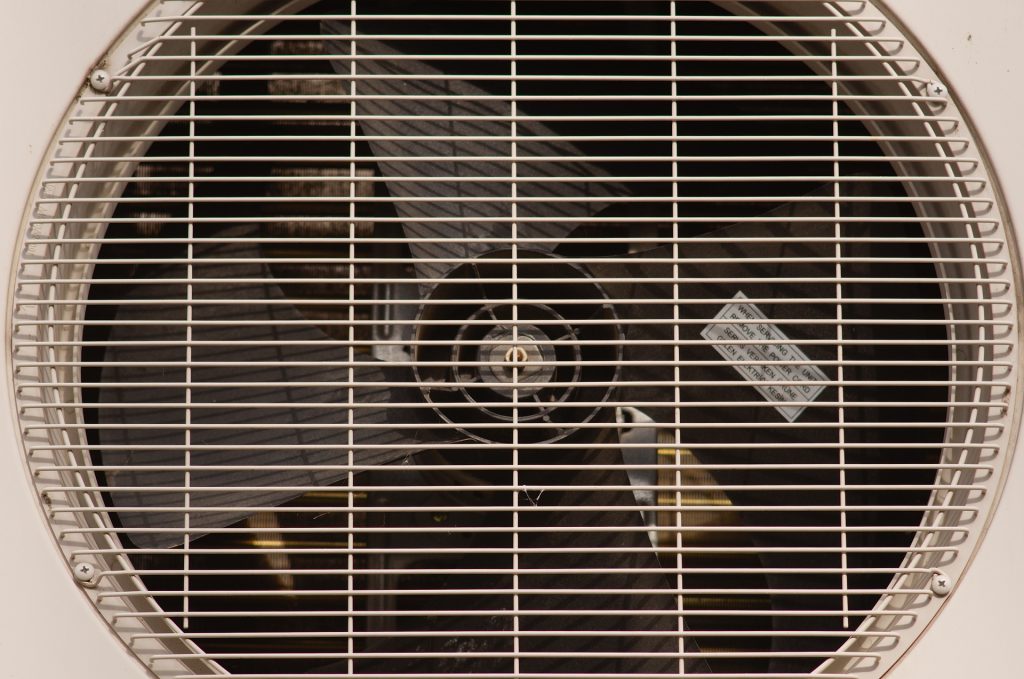Air conditioner maintenance doesn’t have to be complicated. In fact, there are a number of things you can do on your own to prevent costly and untimely repairs down the road.
In this post, we’ll give you a checklist for air conditioner maintenance as well as the steps for each technique.
Why is Air Conditioner Maintenance Important?
If you’ve read our post on common air conditioner problems, you’ll know that most failures are preceded by several warning signs. In our 30+ years of providing service for air conditioners in Phoenix, we’ve noticed that keeping a regular maintenance schedule can help you spot these warning signs early on.
This can protect both your health (as in the case of a refrigerant leak, for example) and your wallet.
Unfortunately, there are many air conditioning specialists who take advantage of unsuspecting clients by recommending unnecessary upgrades and procedures. Establishing even a basic understanding of air conditioner maintenance can help you avoid this.
Air Conditioner Maintenance Tips for Safety
Air conditioners are powerful machines that have large moving parts and use up a lot of electricity. Before we look at maintenance steps, check out these safety tips:
- Get familiar with your circuit breaker.
Your air conditioner should always be disconnected from electricity before you open it up. Central air conditioners harness more than enough electricity to harm you. Failing to disconnect the unit from electricity can also cause those aforementioned large moving parts to start moving, posing mechanical risks.
- Use a respirator.
Air conditioner filters trap harmful particles. Make sure you continue to protect yourself from those particles by wearing a respiratory mask whenever you open the unit, even if you’re just changing filters.
- If you’re not sure what you’re doing, call a professional.
While most of the maintenance tips we’ll share are pretty basic, a few are somewhat complex. If you’re not confident in your ability to complete the steps safely (that includes avoiding damage to the air conditioner), don’t hesitate to contact a professional.
Checklist for Air Conditioner Maintenance
These steps aren’t in any particular order. You may find it helpful to do them all at once the next time you change your filters. As you get more familiar with the process, however, you’ll learn how to schedule each task depending on your air conditioner and its usage.
#1. Conduct Regular Air Conditioner Unit Cleaning
Debris can build up around your air conditioner over time, particularly if you have an outdoor central unit. Air conditioner unit cleaning is essential for removing leaves, branches, and general dirt that can wreak havoc over time.
In addition to cleaning the unit’s exterior, you’ll want to take care of the ducts and coils. Check out this post for some detailed tips on cleaning each of these elements.
#2. Change Your Filters Frequently
How often do you change your air conditioner filter? Once or twice a year? That’s not enough — especially in states like Arizona where air conditioners run for most of the year.
You should really be changing your air conditioner filters every 1-3 months depending on your region’s air quality.
Regulatory bodies like the Environmental Protection Agency provide data on air quality throughout the United States. Look up your region on their site here and use that information to help you determine how often you should change your filters.
Generally, the data is categorized as followed:
- Good Quality: 0 to 50
- Moderate: 51 to 100
- Unhealthy for Vulnerable Sectors: 101 to 150
- Unhealthy Overall: 151 to 200
- Very Unhealthy: 201 to 300
- Hazardous: 301+
Not sure what to do? Just make things easy on yourself and change your air filter every three months at a minimum.
#3. Ensure Your Air Conditioner Fins Aren’t Bent
On the exterior of every air conditioner, you’ll find aluminum fins. These fins help the air conditioner stay cool, which is why you need to ensure they don’t get deformed.
Deformation often happens as a result of debris smacking up against the air conditioner compressor repeatedly. You can avoid this by keeping at least one foot of clearance on all sides of your air conditioner.
If the fins are slightly bent, you can usually run a hand brush along them to restore their shape. If they’ve gotten severely bent, however, you’ll need to use a butter knife to twist them back into shape.
Be gentle; as with any piece of thin aluminum, these fins can snap if you twist too much or too harshly.
#4. Make Sure Your Air Conditioner is Level
One of the less-obvious tips on this air conditioner maintenance checklist involves ensuring that your unit is constantly level. You’ll need a spirit level tool (the kind used on construction sites) to check this.
Why does your AC being level matter?
Well, there are two reasons. Firstly, an uneven air conditioner will continue to sink in a lopsided manner. Eventually, it may tip over and disconnect from the refrigerant line, causing a leak that can be harmful to the environment and your safety.
Secondly, your air conditioner’s condenser pump won’t work properly if it’s not level. Lubricant will end up pooling in one part of your air conditioner, which prevents it from getting where it needs to go. You’ll experience premature wear on various components as a result.
The one exception would be if you have a heat pump (learn more about what makes those different than air conditioners here). These are typically angled away from your property.
If you place a spirit level on top of your air conditioner and get an uneven result, you’ll want to prop it up with shims.
#5. Check On Your Air Conditioner’s Vibration Pads
Air conditioners vibrate a lot. If you’ve never noticed this, you can thank vibration pads.
These pads sit underneath your air conditioner and prevent it from vibrating against the concrete or whatever else lies underneath it.
Over time, these pads can shift out of place. As part of your regular maintenance routine, readjust them so they sit in the intended position.
#6. Unclog Your Evaporator Drain
Your evaporator drain clears condensation that builds up during the air conditioning process. When it gets clogged, fluid builds up inside your air conditioner and can cause issues such as blowing vapor.
Even if you’re not noticing such a sign, it’s a good idea to check on your evaporator drain every now and again. Here are the steps:
- Disconnect your air conditioner’s electricity
- Push a thin, long brush through the drain line, which will often clear any blockage
- Attach a shop vac to one end of the drain line and switch it on
- If you’ve cleared a blockage, empty the drain pan as it will likely be full
- Pour a 50/50 mixture of bleach and water into the drainpipe and wait for a half-hour
- Flush water through the drain pipe and ensure it passes through
- All done!
#7. Check Your Refrigerant Level
Contrary to popular belief, the purpose of checking your refrigerant level is not to see if you need to call someone and have them “refill” and have them refill AC refrigerant for you. Rather, low levels of refrigerant indicate a serious issue, such as a leak in the closed system that is supposed to keep chemicals like freon trapped for your unit’s entire lifespan.
If you’re serious about home improvement, you can buy an electronic refrigerant leak detector. These can cost several hundred dollars, though, so many people prefer the following quick and easy test.
- Mix soap and warm, distilled water for several minutes
- Run that mixture through your refrigerant line
- If air bubbles appear, you have a leak
This is definitely one of those tips that you should skip if you aren’t 100% confident in what you’re doing. You don’t want to damage the refrigerant line by causing corrosion or anything of the sort.
#8. Apply Lubricant to Moving Parts
If you have an older air conditioner, it likely has service ports meant to facilitation the insertion of lubricants. Refer to your instruction manual for exactly what type of lubricant the manufacturer recommends. Applying it is usually as simple as injecting it into the port, which leads to components like your fan and compressor.
If you have a newer air conditioner, you probably won’t notice any such ports as these units are self-lubricating.
#9. Inspect Your Ductwork for Leaks
Ductwork can be a bit finicky to inspect due to the fact that much of it is hidden behind bulkheads and walls.
Here are a few warning signs to look for, however:
- Higher-than-usual utility bills
Modern air conditioners work until the thermostat detects the correct temperature. If your ductwork has a leak, the unit will have to work harder than usual to achieve that. Read our article about the average electric bill in Phoenix during the summer for more information.
- Microscopic tears around joints
Turn your air conditioner up to full blast and place your hand around one of the exposed joints. If you feel any air emerging, your ductwork likely has a small tear in it that needs fixing.
- Use a smoke pencil
Smoke pencils are much more sensitive to airflow than your hands. If you suspect you have a leak but can’t feel it on your own, hold the smoke pencil near the joints and see if the smoke changes direction.
- Place a fog machine near your intake fan
As the fog passes through the system, leaks will be evident.
As with the previous item on this checklist, you’ll likely want to get in touch with an expert if you’re not sure about what you’re doing.
#10. Inspect Electrical Components for Wear
Electrical components can wear down over time, causing everything from burning smells to intermittent operation of your air conditioner.
To avoid this, make sure you inspect as many of your air conditioner’s electrical components as possible. You don’t have to go digging very far; just inspect the cables nearest to the outer portion of the unit. If you notice damage, let a professional take a closer look.
Air Conditioner Maintenance Checklist: Conclusion
We hope these air conditioner maintenance tips have been helpful in demystifying these useful machines. If you live in the Phoenix, Arizona area and are looking for professional assistance with your air conditioner, feel free to give American Home Water and Air a call. We’ve been in the business for more than 30 years and would love to lend a hand!
Frequently Asked Questions
How often should you do air conditioner maintenance?
As we discussed in this post, you should have a professional look at your air conditioner twice annually. However, you should also conduct steps like changing filters, inspecting your ductwork, and monitoring vibration pads on a monthly basis. You can also check our article on leaving AC on all day for more tips for reducing air conditioner costs and maintenance
What maintenance does a central air conditioner need?
In addition to changing your air filters each month, you’ll need to regularly clean away any debris that has gotten caught in the unit’s coils. Beyond that, have a professional inspect your central air conditioner twice yearly to identify any preventative repairs that might be needed.
How much does it cost to hire an annual air conditioner maintenance service?
Check out our pricing page for more information. We charge between $69.95 and $99 for a service depending on what time of day you need a service. Meanwhile, our annual program ranges from $129 per year to $299 for three years. This represents significant savings over paying every time you need a service.
What is checked on an air conditioner maintenance?
As part of our air conditioning service, we run through a checklist of 40 items. That includes your thermostat, coils, relays, condensate drain, ductwork, and much more.



